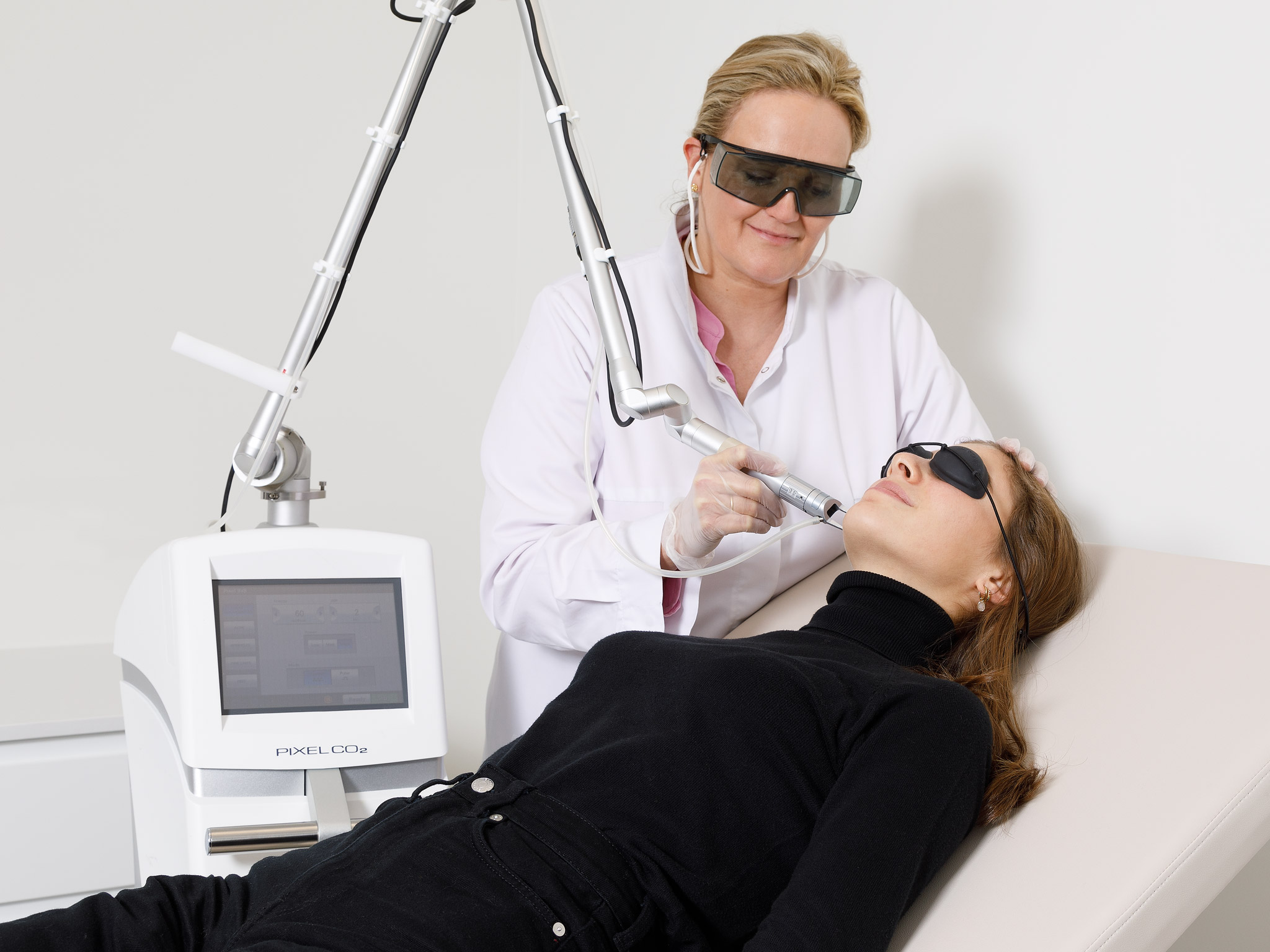The fractional CO2 laser is an ablative laser to treat sagging skin on the face and neck, certain wrinkles, dull complexions, scars, stretch marks and some tumoral lesions of the skin.
Due to the fragmented action, it causes micro perforations in the skin leaving the surrounding skin untouched for easier healing. By heating the dermis, it stimulates the production of collagen. During this procedure, topical medicines such as Vitamin C, silicon, tretinoin, and hyaluronic acid can be introduced through these small perforations, which will improve both the quality of the skin and the desired effect. The skin will improve progressively over three to six months. Considering that each treatment will improve sagging by 25 to 30%, several sessions may be necessary.
After a single session, the complexion will already be far brighter. This treatment is carried out under local anaesthetic and may cause redness that lasts roughly ten days and can be covered after six days. Using a LED lamp can help reduce redness more rapidly. Skin should not be tanned. Sun exposure can resume four weeks after the treatment using an SPF50 sunscreen. This kind of treatment is suited to phototypes 1 to 4. For phototype 4, applying a depigmenting preparation a month before and a month after the procedure is recommended. During treatment and in agreement with your doctor, anticoagulants must be discontinued. This treatment can be combined with another consultation for hyaluronic acid or botulinum toxin injections, or other treatments such as picosecond laser, IPL, HIFU, radiofrequency or microneedling with radiofrequency. Fractional CO2 lasers can also be combined with surgical facelifts.
Removal of benign tumoral skin lesions is immediate. The procedure takes place under local anaesthetic. It takes about 10 days to heal. Skin should not be tanned. Sun exposure can resume four to six weeks after treatment using an SPF50 sunscreen. This kind of treatment is suited to phototypes 1 to 4. This kind of treatment is not suitable for removing malignant lesions. In such cases, surgical excision of the lesion is necessary. During treatment and in agreement with your doctor, anticoagulants must be discontinued.
The fractional CO2 laser is also used to make microperforation into the skin to enhance the penetration of medication and to improve the result of simulated daylight photodynamic therapy in the treatment of actinic keratosis. Anticoagulant treatment may be continued.
Prior consultation with a dermatologist or plastic surgeon is compulsory. Together, you and your doctor will assess which treatment is best suited to your needs and what the possible side effects might be. Based on this discussion, the doctor will also provide a quote.
